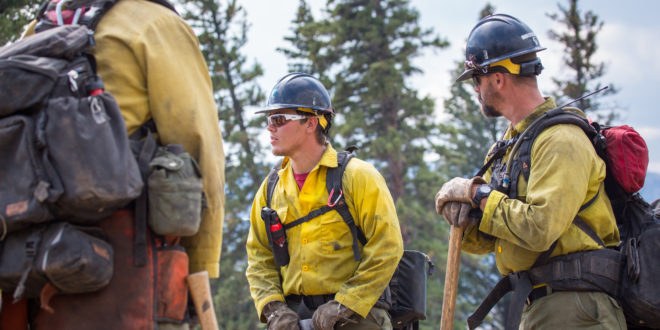With summer about halfway over, fire crews in Yellowstone National Park are working to mitigate the danger of severe blazes.
Last week, we reported officials were projecting an “average fire season” in Yellowstone. We also reported the park had ramped up its fire danger rating to Moderate, which means “some wildfires may be expected.”
Officials are extra vigilant this year, especially after 2016, which saw the most fire activity in Yellowstone since 1988. And according to KTVQ Billings, officials are taking extra precautions to ensure that, should the fire danger ramp up, firefighters are preparing “defensible space” in portions of the park:
KTVQ.com | Q2 | Continuous News Coverage | Billings, MT
“This project is all about risk management,” said John Cataldo, a Yellowstone National Park fire management officer.
“By sacrificing some of the trees directly in and around this community we are reducing the risk to firefighters. That’s our number one objective,” he said.
At the northeast entrance of Yellowstone, crews are creating 34 acres of what they call “defensible space”, which means trying to keep distance between trees and remove trees that are already down.
“Generally you want 20 feet between trees,” said Zac Allen, a park fuels specialist.
Cataldo and Allen said this work is important because it is much more difficult to stop the spread of fire once it is in the tops of the trees.
“What we’re trying to do here with this project is affect the physics of a fire in this area and cause that fire to drop down out of the crowns of the trees onto the ground where we can manage it with personnel,” said Cataldo.
To do this, crews are removing dead and downed trees in the area.
They are also forced to cut some trees down to create the right spacing, which is a process that takes years to be approved.
“If they’re salvageable, and they could be used from something else, then we will pull them out with the tractor,” said Allen.
“If they’re too far gone, we will cut them up to put into the burn pile or chip them,” he said.
Cataldo notes that even areas burned by fires tend to bounce back after a few years (relatively speaking). Indeed, researchers view the 1988 fire scars as fertile territory for understanding post-fire ecological dynamics.
According to KTVQ, Cataldo and his staff hope to balance the region’s need for fire with community safety, all the while advising residents to take their own safety measures:
“This ecosystem needs fire. It’s famously fire adapted, so were taking the necessary steps around the communities to do what we need to do in the wilderness areas,” he said.
Allen said there are things everyone can do to keep their property a little safer during the fire season, including making sure to keep at least 20 feet between your home and areas of thick trees.
He also advises keeping any fire wood piles a good distance away from your home.
 Yellowstone Insider Your Complete Guide to America's First National Park
Yellowstone Insider Your Complete Guide to America's First National Park





